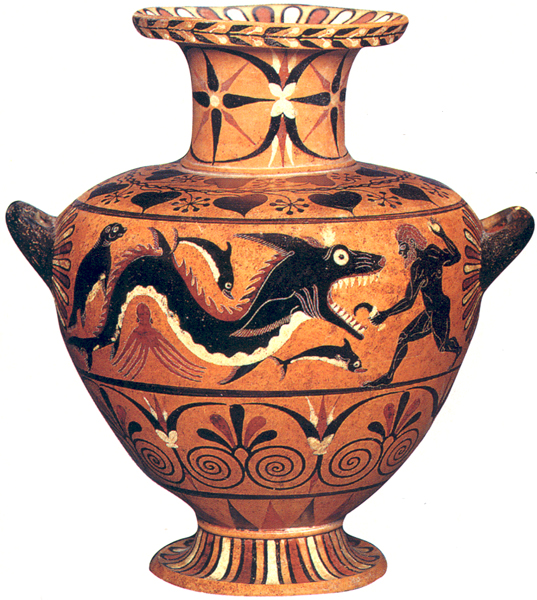Image Details

Private Collection
Armed with a sickle and a fistful of stones, a muscular man confronts a more conventional sea monster, or ketos, on this 16-inch-high, late-sixth-century B.C. hydria (water jar) from Caere, 30 miles north of Rome. Ordinary Greek sea monsters (see the sidebar to this article), unlike the craggy, bony specimen on the Hesione vase, tend to be sleek composite creatures, with parts taken from wolves and serpents (as shown here), as well as from lions, crocodiles and other beasts.
